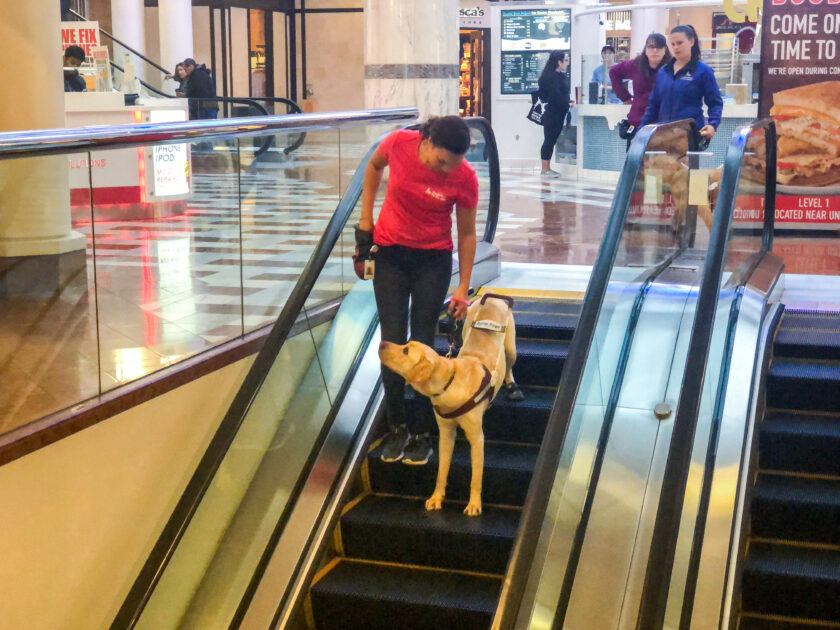Focus on the Phases: Guide Dog Training Part Three
Friday October 06, 2023

Welcome back to Part Three of our five-part series, Focus on the Phases! Come along with us as we continue to explore the various stages of the guide dog training process. Each week, we’ll give you some insight into the specific skills and milestones that guide dogs in training go through when they are on campus.
If you missed them, you can read Focus on the Phases: Guide Dog Training Part One and Part Two.
In Phase 4 of guide work training, dogs get the opportunity to explore more new environments! Training staff begin to introduce guiding in buildings and using stairs, elevators, and escalators. The dogs will travel to busier city areas too. Buildings and cities often present additional challenges with distractions and new obstacles. They will also learn how to negotiate walking through open spaces, like courtyards or outdoor shopping centers that don’t always have a distinct sidewalk. In this phase, dogs will also learn to stop along the walkway if there is an obstacle overhead, like a low-hanging branch.
Throughout all of the phases, the dog continues to practice their basic obedience behaviors and progress to more advanced obedience behaviors. This includes holding the stay position for longer durations or with added distractions, heeling calmly when walking on a leash, and refusing food if it is on the ground or offered by someone other than their handler.
In Phase 5 of guide dog training, a new element and environment is introduced as dogs practice boarding and riding public transportation and the dogs learn how to respond to various scenarios where a vehicle may impede the team's travel. During highly choreographed routes, GDB training vehicles (driven by an experienced staff member) will pull out in front of the guide dog in training and the instructor will have the opportunity to teach the dog how to come to a stop with a safe buffer, giving distance to the vehicle. The dog may then have to wait, back up, or speed ahead based on what the vehicle does next. Many repetitions are provided in this controlled manner as the dogs learn these new skills.
Come back next week to read about Phases 6 & 7 of guide dog training in Part Four of our series, Focus on the Phases

